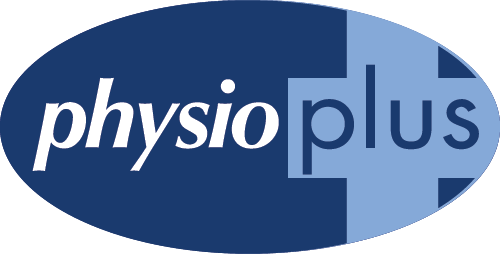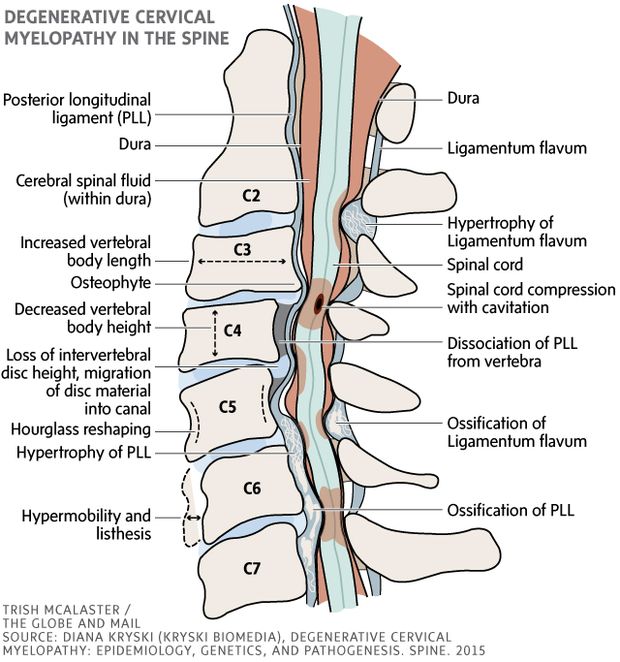By Matt Fitzsimmons – Physiotherapist
What it is:
DCM is the leading cause of spinal cord impairment in adults, which can rob people of their mobility and independence if left untreated. An estimated one in 10 people will eventually develop the condition, which is commonly diagnosed among patients over the age of 50. As the proportion of older Canadians rises, it’s now more important than ever that people recognize the signs.
DCM involves compression to the spinal cord from a reduction in the space where the spinal cord is situated within the vertebrae. This compression, over time, can cause pain, disability, and a loss of function in the extremities due to altering the function of the nervous system.
This primarily occurs secondary to a bulge in the discs in the neck or when the soft tissue surrounding the vertebrae, such as the ligaments, increase in size or ossify. Below is a visual description of how this condition may occur:
Here’s what you need to know about DCM:
There is not much people can do to prevent this from happening. One of the main causes, a condition called OPLL (ossification of the posterior longitudinal ligament), is not preventable. The cause of OPLL is unclear, although there are genetic factors and the condition is more prevalent among patients of Asian descent. However, smoking is a known risk factor for cervical spondylosis and degenerative disc disease which can contribute to the cause of DCM.
The symptoms:
About 50 per cent of patients who are diagnosed with DCM initially report having neck pain, a symptom that should prompt a look at whether there’s any compression of the spinal cord.
Other symptoms may include:
- Impairment/clumsiness with walking or changes in your balance
- Numbness, tingling and/or pain down one or both of the arms and hands
- Pain down the length of the spine
- Difficulty with fine motor tasks e.g. buttoning your shirt or hand writing
- Bowel or bladder impairments
Because these symptoms can overlap with other common conditions, such as carpal tunnel or cervical stenosis from the joints in the neck, this condition is often misdiagnosed. The standard diagnostic tool to confirm whether someone has DCM is magnetic resonance imaging (MRI).
The treatment:
Physiotherapy:
Patients with mild symptoms should be monitored and may benefit from physiotherapy. A physiotherapist, once identifying DCM, can assist in providing education, manual therapy, and exercises to assist you in improving posture, neck mechanics, and pain management techniques to reduce or improve the consequences of spinal cord compression.
Surgery:
Surgery is recommended for those with moderate to severe impairment. Surgery is performed to take pressure off the spinal cord, and in some cases, to reconstruct areas of weaknesses. For instance, this can involve removing the discs, and placing a bone graft into the disc space to open it up, then correcting the alignment of the spinal cord, and reconstructing the area of the spine with a titanium implant. Most patients only need surgery once, he says, but as they age, some may need further surgery on untreated areas of the spine.
Reference:
*The above article is a summary of Degenerative Cervical Myelopathy (CDM) extracted from an article from The Globe and Mail. To view the full article, visit https://www.theglobeandmail.com/life/health-and-fitness/article-how-to-recognize-the-early-signs-of-degenerative-cervical-myelopathy/

